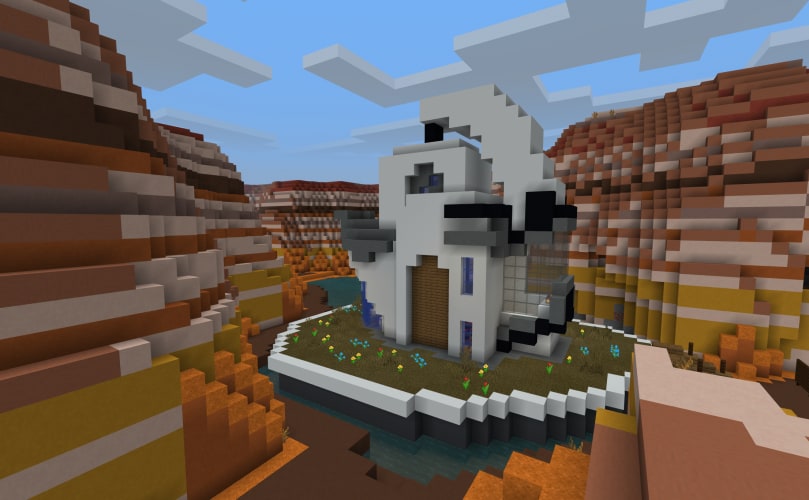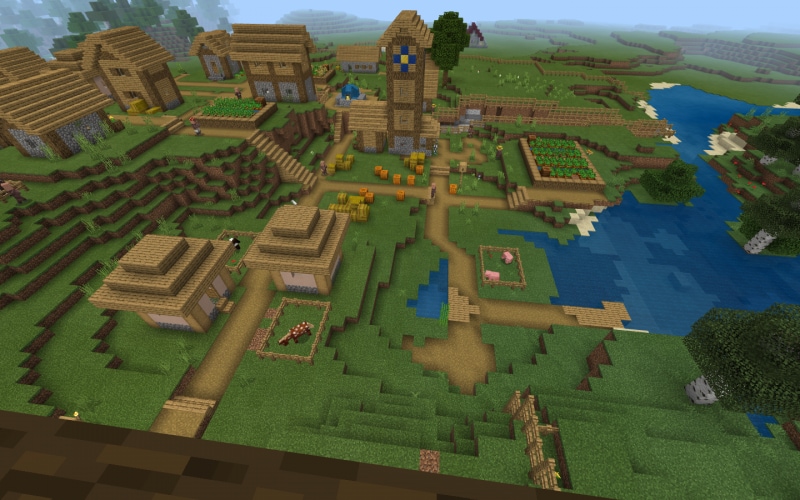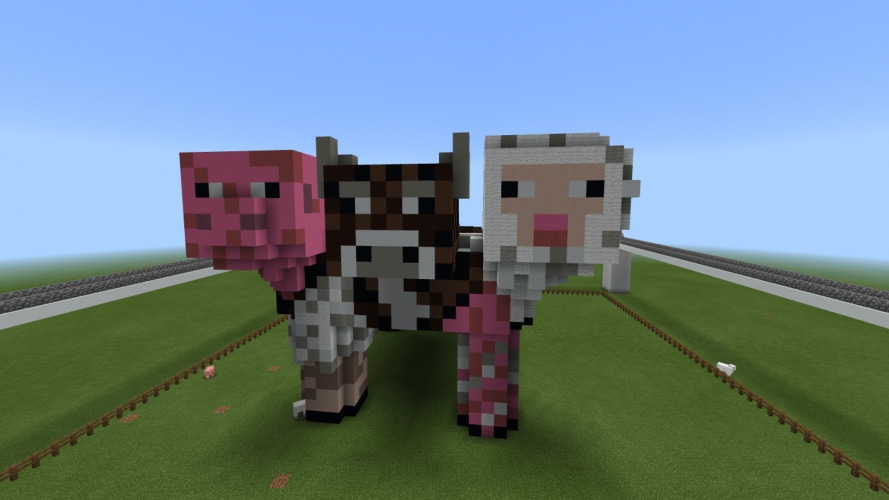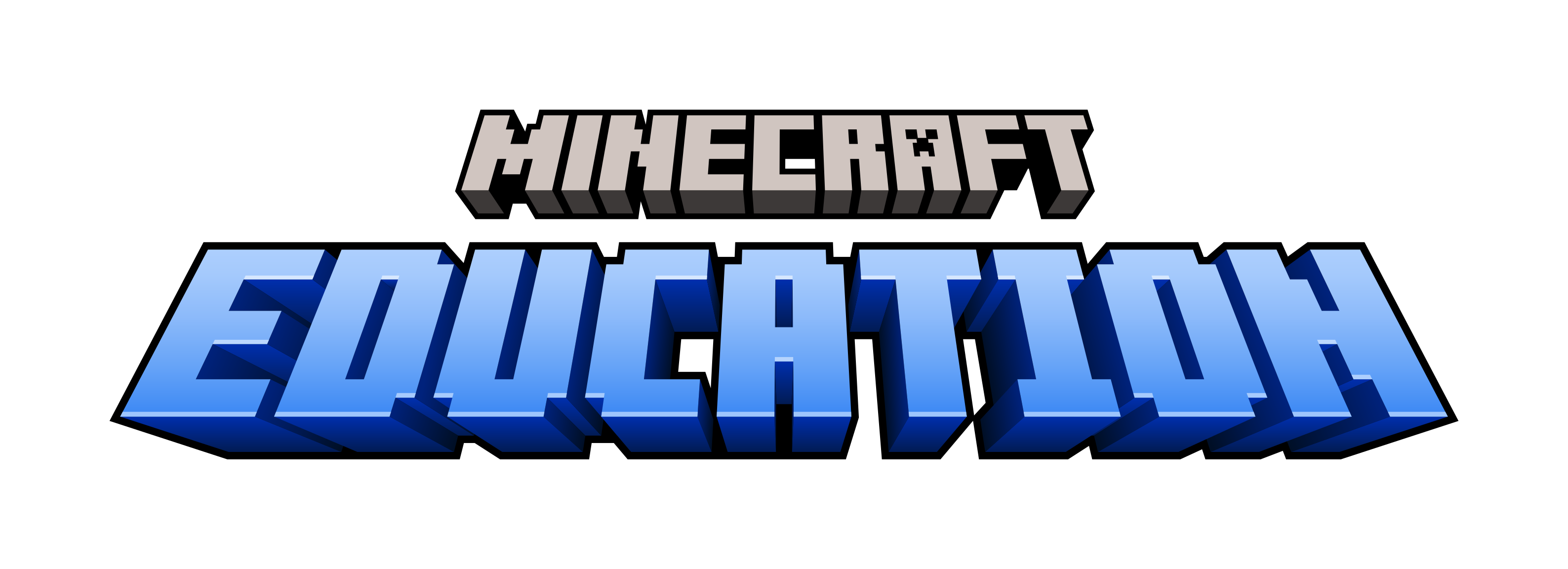Teach Writing with the New English Language Arts Pack

We’re excited to announce the new English Language Arts Pack created in partnership with the National Writing Project. These 10 lessons for Minecraft: Education Edition focus on world-building and engage students in a game-based learning experience that will help them learn about the writing process. Read more from Joe Dillon, world designer and curriculum writer of NWP’s Denver Writing Project.
Just as a player logs in to Minecraft, in the moment before she begins to dig, build, fly, or otherwise explore, she encounters a screen that offers her the choice to create a new world. Veteran Minecrafters will tell you that with just a few clicks, they can command the game to render vast digital expanses with a variety of biomes and the creatures that inhabit them. Think arctic environs with polar bears, jungles thick with vines where parrots fly from tree to tree, aquatic scenes filled with coral, sea creatures, and sunken treasure. For a different game experience, a player can also create a flat world devoid of digital creatures, without flora or fauna—a clean canvas for designing with digital blocks. From the outset, Minecraft asks players, “What kind of world do you want to create?”

The creative potential of Minecraft is core to the game’s legendary popularity, and also why it is an intriguing space in which to think about composition with teachers and students. In an effort to inquire into the world-building possibilities that Minecraft offers English Language Arts educators and young writers, teachers of the National Writing Project network have created 10 writing lessons related to world-building. These activities invite youth to play with the connections between creative writing and creative gaming.
Setting in Narrative Writing: Explore the desert and imagine story possibilities.
Characters All Around: Meet three characters and create one of your own.
Diving for Dialogue: Help a group of people stranded on an island recover resources from a shipwreck, then write a dialogue.
Exquisite Corpse: Learn about a century-old surrealist game, then write and play in this world.
6 Room Poem Maze: Tour a maze while writing about a powerful image to get practice with poetics.
This I Believe: To help in the writing of a “This I Believe” essay, study mentor-texts from the popular NPR essay series and build objects that represent beliefs.
Where I’m From: Inspired by the poem, “Where I’m From,” by George Ella Lyon, explore digital spaces that illustrate stanzas written by youth, then write your own stanzas and illustrate them.
Conflict in Stories: Tour a scene with a few conflicts to think about story ideas and imagine resolutions.
Narrative in Perspective: The mayor of a troubled village needs your perspective on some difficult issues. Your report will help her set things right.
Settings for Stories: Tour four different environments while you answer questions that fiction writers use to engage in world-building.
These lessons were built with the help of educators interested in thinking about the question, “What if lesson-planning had a second step: world-building?” Each was imagined as a playful interpretation of a concept familiar in English Language Arts, and each asks players to write and build in different ways. Young writers from the Denver Writing Project not only helped test the activities, but a few of them also lent their Minecrafting expertise and aided in the construction of the worlds.

The process of designing worlds with teachers and youth was collaborative, challenging, and fun. We expect to uncover more about teacher learning by continuing to venture into playful spaces where we see young people engaged and passionate about creating. We hope these activities inspire innovative lesson planning and playful teaching. We advise teachers to enlist youth as we did and to revise these lessons while you play them. Make copies! Make changes!
As for the young people who give these lessons a try, we hope they inspire the most creative of writing and awesome Minecraft builds. To that end, we recommend young writers enter these spaces as play-testers, which might be more inviting and challenging than entering as students. Surely young Minecraft lovers, clicking around in the lessons we’ve designed, will come up with architectural iterations for these learning spaces. Surely young people have playful ideas for new ways to build worlds. And we want to keep learning with you all!

We’re excited to see the ways that students express their creativity through these worlds! To hear more from Joe Dillon and Christina Cantrill, Associate Director of the NWP’s National Programs, check out the National Writing Project episode of our podcast. If you’re new to Minecraft: Education Edition and want to get started, head to education.minecraft.net/get-started.


